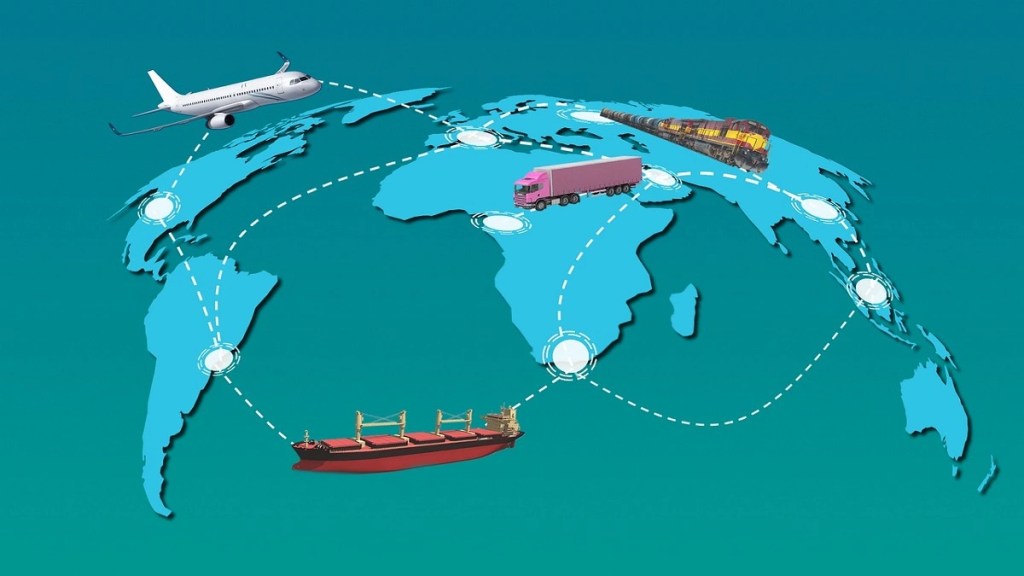By Dr. Jones Mathew
In the “localised” supply chain era about a century back, country core competencies were distributed across the world and countries with limited access to global networks had to make do with self-sufficiency practices. Then the idea of networking to benefit from the country-specific strengths of different countries started dominating the world and “globalization” became the mantra for success. This was predicated on the belief that the menace of major wars was over or contained, and an age of global cooperation was possible and imminent. This would help countries adopt best supply chains and access materials from the best suppliers. We had almost reached there. However, geo-political tussles continued to create occasional problems. Most of these were sorted out through international arbitration and quasi-judicial organizations. Except for small and medium niggles here and there, the globalized economic system seemed to work just fine.
The real bolt from the blue, however, was the pandemic. It came in unannounced, with incredible speed and reach, and killed in millions. The response to this pandemic was uncoordinated at best and untenable at worst. For a virus that did not respect geography, individual countries coming up with their own types of lockdowns did not stem the death rate. Lockdowns had more consequences than simply making people and materials immobile. It broke the backs of many economies, and even disoriented an entire “Coviid” generation of youngsters.
The impact on supply chains and consumption was significant. Countries and companies scrambled for survival. It seemed the globalization honeymoon was over. We were back to looking inward rather than totally depending on international supply chain integration due to the massive vulnerabilities. For India, self-sufficiency may be easier to achieve given our vast wealth in terms of natural resources and a fairly good level of access to these resources. However, there were specific areas of special attention that needed quick thinking and action: moving available inventory to places away from quarantine zones and closer to pick up ports; buying in advance the materials that needed to come from impacted areas; quantify the impact of the virus over the mid and long term on supply chains; and perform risk assessment on crucial business functions.
Also read: ‘Competitive supply chain ensuring fast turn-around time, catering to rising demand, boosting profitability must for small businesses’
In the present, post-pandemic era of glocalisation – an integration of the local with the global – companies are still struggling to find a robust alchemy of the two. Conducting risk assessment to create and embed a glocalised supply chain strategy requires the following:
- Assess the probability of a risk occurring on a low, moderate, high scale
- Assess the impact on the business of each risk as low, moderate, or high
- Identify the source of the risk
- Assess the vulnerability of the source of risk on a low, moderate or high scale
- Examine alternate local resources (ALR) to abet any calamity
- Examine the time needed to activate the ALR
- Activate the ALR if 1, 2 and 4 above are high
- Migrate the system to ALR.
Risk identification needs deeper supply chain visibility, beyond 1st and 2nd tier suppliers. If a company perceives a risk likely to come up due to geo-political tensions, or raw materials/components shortages, or currency fluctuations, to name just a few disruptors and has the requisite tunnel visibility, it might protect itself from some serious damage. SCM managers need to develop special skills of market scanning and detecting pattern shifts driven by a multitude of factors. The US-China standoff, the Russia-Ukraine war, China-Taiwan-US 3-way tussle, the grains blockade, the chip shortage, and climate change – all need to be monitored closely for early warning signs. Simulation models taking into consideration these and other factors must be at the disposal of supply chain managers to help detect the need for glocalisation as early as possible.
The next problem to be solved is to get the ALR to be of the quality level that is needed for manufacturing and delivering top quality products and services. Many decades ago Maruti Suzuki had the vision of developing an entire automotive ancillary industry around its car manufacturing plants which later on went on to become top quality suppliers of components to global car manufacturers. By investing early on in these ancillary units, the company was able to leverage local power and global expertise.
The last step is to seamlessly integrate the local procurement chains with global supply chains. The end result must be one of delivering better value to the end customer at a higher cost efficiency for the firm. Therefore, glocalisation would need different sets of specialists. First would be the Reconnaissance Expert (RE) – the one who must constantly map the environment for early supply chain disruptions; next would be the Glocalisation Initiator (GI) – the executive who picks up information from the RE and activates the ALR search activity based on risk perception received from the RE; this is followed by the Glocalisation Champion (GC) – one who sells the need for ALR discovery and development within the hierarchy of the organization; and finally the Glocalisation Integrator (GIn) – the one who brings together various teams in an agile manner to exploit the glocalisation opportunity.
Given the current world scenario, there might be wisdom in shoring up one’s internal/domestic supply chain capabilities. “Once bitten, twice shy” maybe a good credo to follow. At stake may be more than just millions of dollars in sales losses. If a glocalisation thrust is not a part of corporate or marketing strategy, it could even determine the very survival of the firm.
(The author is a professor at Great Lakes Institute of Management, Gurgaon. Views expressed are personal.)

